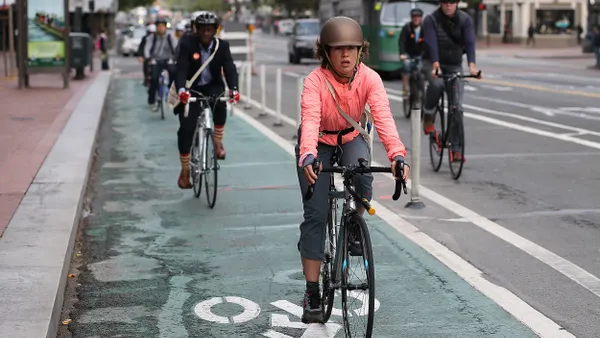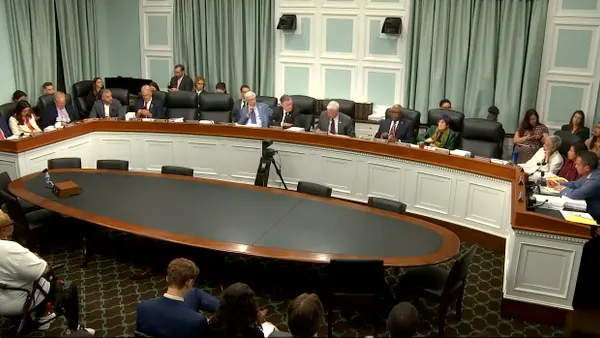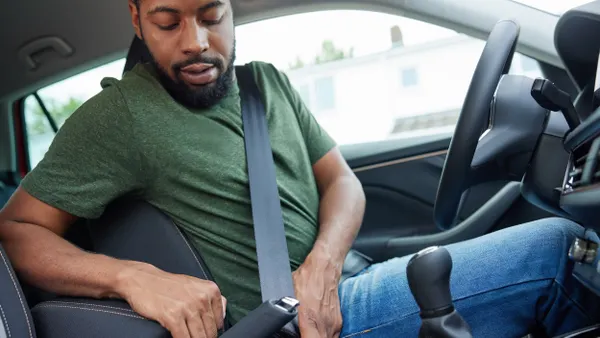Dive Brief:
- A new report on the economic impacts of autonomous delivery services found the continued development and deployment of delivery AVs could generate 3.4 million jobs and $4.1 trillion in total value to the U.S. economy.
- The scope of the report, produced by Steer for AV company Nuro, centered around on-road autonomous delivery vehicles and their projected impact from 2025-2035. The findings suggest AV delivery services could have impacts that differ from other forms of autonomous systems; for example, job creation could be spurred by a demand for "pick and pack" workers at shopping locations, an economic growth factor not seen in other segments of automation.
- The report also highlighted the social impacts of autonomous delivery systems, including reductions in traffic collisions and emissions due to fewer delivery drivers on the road. It detailed a potential reduction of 348,000 road injuries and of 407 million tons of CO2 emissions between 2025-2035.
Dive Insight:
Nuro made headlines in February as the first company to receive a temporary exemption on certain federal driverless vehicle requirements from the National Highway Traffic Safety Administration (NHTSA). That exemption paved a path forward for the company's R2 vehicle, a zero-occupant, low-speed delivery vehicle designed to carry consumer products such as groceries, packages and restaurant orders.
Nuro is now testing its R2 vehicles on public roadways in Houston, the same city where it's also running a prescription delivery service in partnership with CVS Pharmacy. That program utilizes autonomous Toyota Prius vehicles, which are the default starting vehicles for local programs before an eventual switch to custom vehicles, said Nuro Head of Policy Matthew Lipka.
Lipka said the company wanted to better understand the initial positive impacts of its pilots and commissioned the Steer report to further educate industry stakeholders and the public on the benefits of autonomous goods-moving specifically, as AVs are often seen primarily as transportation modes to move people.
"When people think about automation, they have a lot of questions," Lipka said.
He highlighted the potential for delivery AVs to expand grocery and food delivery options, especially for individuals who may live in food deserts or not have equitable and affordable access to grocery stores. Prior to the COVID-19 pandemic, approximately 3% of all groceries were delivered, according to the report. That number has now skyrocketed amid stay-at-home orders, which could greatly advance the demand for autonomous delivery services.
"It remains to be seen how much of that persists," Lipka said, suggesting approximately 23% of in-scope vehicle miles traveled could be replaced by delivery AVs by 2035.
And while the current demand in grocery and food delivery has been supported by an influx of gig workers at companies like Instacart and Postmates, Lipka says he's not worried about possible job losses in the wake of delivery AVs.
"I don’t think it’s a case of wiping those jobs out," he said. "It’s going to be a case where more people can afford delivery autonomously, but other people prefer to get delivery by a human, other people prefer to go to the store and pick out their own produce, and all of those can work consistently together."
The benefits detailed in this report will hinge upon the successful collaboration of industry stakeholders, regulators and the public to further test and deploy these vehicles on public roads — a task that may be easier said than done. The report concludes with recommends for operators and regulators to prioritize a "more harmonized regulatory environment," equitable job creation and partnerships with the wider mobility ecosystem.










